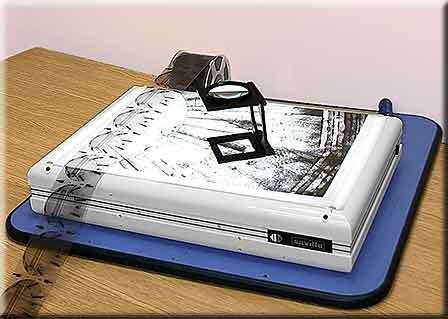|
PP4SS Exhibits
Particle Tracks |
||||||||||||||||||||||||||
| Although modern detectors such as CMS and LHCb make use of electronic detection devices whose data are interpreted by computer to produce particle tracks (and other information), it's instructive for pupils to examine older bubble chamber images, which lend an immediacy to the idea of particle detection, as well as making them appear more tangible.
The final exhibit lets people look at a variety of real bubble chamber photographs, with their associated interpreted results. Pupils can carry out investigations on simplified collision pictures, understanding the basic principles of particle interaction: the conservation of properties such as energy, momentum and charge. Making use of these properties (as well as tables of information from the standard model), pupils will use worksheets to identify particle types, make predictions as to the products of certain collisions, and understand how uncharged particles leave no track, and have to be inferred from the tracks left by precursor particles or daughter products. |
||||||||||||||||||||||||||
|








